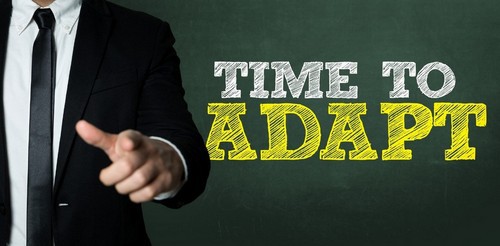Adaption level theory, also known as AL Theory is a Psychological concept which explains that the basis of an individual’s judgment on a stimulus depends on their past experiences and/or recollections of the encounters they have had with similar stimuli in the past.
In other words, the Adaptation level theory puts forward a hypothetical concept that states that the judgments of an individual regarding a particular class of stimuli is governed by his/her past experiences and/or recollections of the judgments in similar situations.

This theory was put forward by an American Psychologist and Kansas University Professor, Harry Helson (1898 – 1977) in the year 1947. Simply put, the theory states that an individual’s evaluation pertaining to a particular result depends on the collective experience garnered by the same individual while facing similar situations in the past.
Henry’s theory explains the relationship between the past experiences and the present day judgment of an individual, also referred to as an individual’s adaption level, mathematically, by taking into consideration a wide variety of criteria such as the reference points of previous judgments, mean of similar stimuli in the order of their recency and salience, among others. It is expressed in the form of a logarithm which reinstates that an individual’s past experiences and encounters related to similar stimuli play an important role in determining his/her adaption level when a similar situation occurs.
In the light of the above findings, the adaption level theory can be considered as a theory of relativity in terms of Psychology, and is based on the hypothesis that an individual’s subjective judgment is based on the prevailing norm (or adaption level) of that particular individual. The theory is better explained in the following examples.
Adaptation level theory Example -1
Though AL Theory is expressed as a mathematical formula, it can also be quite conveniently adapted to the applications that have nothing to do with mathematics. For example, an individual might consider a newly introduced car model as ‘pretty big,’ because the size of the car contradicts his/her perception of the size of a new model car, which might be relatively small depending on his previous experiences. This judgment, according to Henry, is an outcome of the combination of previous experiences/reference points of the individual combined with the prevailing norm of new model cars.
Here, it should also be noted that as the size of the new model cars keeps getting bigger, an individual’s perception of the size of the new model car will also start shifting towards a bigger size, which is now, according to the individual, is the prevailing norm of new model cars. Above mentioned scenario also serves as a great testimonial to the Henry’s theory which states that the adaptation level of an individual is governed by the mean of similar stimuli in the order of their recency.
Adaption level theory Example – 2
To better explain the terms ‘prevailing norm’ and ‘adaptation level,’ let us consider another example. We all use various kinds of pens in our daily life. Though most of them are of similar weight (around 5.8 grams); some may be a bit lighter than the others. However, what is the benchmark that decides whether a pen is heavy or light?
If you hand a pen to an individual and ask him/her if it is light or heavy, the judgment would definitely involve that particular individual’s recent past experiences with a pen, along with the weight of a pen that is considered as normal under prevailing conditions. The individual may only be able to pass his/her judgment after taking into account the above factors, which when combined, collectively represent the prevailing norm of the weight of a pen, as well as the individual’s adaptation level.
Conclusion
Henry’s adaptation Level theory suggests that the marketers should make a genuine attempt to gauge the impact that can be caused by the ‘prevailing norms and adaptation levels’ on the subjective judgment of an individual. Understanding the influence of previous experiences on consumer’s present evaluation, provides marketers with better insights and helps them to persuade, influence or alter the judgment in their favor.
Liked this post? Check out the complete series on Marketing
i want d detail n clear concept on this topic n the above given passage me is enough 4 my satisfaction on adaption level theory but the mathematical equation is missing here….!!
Glad the article was of use to you. I personally do not know of any such mathematical equations. However if i do come across such an equation, i will surely paste it here. Keep visiting.
this article was helpful for me. i was so confused about this theory but finally i found the right theory but i have one question . is helson a psychologist or mathematician?????
Helson basic equation for AL has the following form:
A= K( Sp bar on s Cr Rr)
Where A is the predicted value of AL, K an empirical constant, S bar the geometric mean of the series stimuli, C another stimulus, R refer to residual stimuli
hi..i am college student, can i use this theory in dealing with sales promotion and its influence to consumer purchasing behavior?please help..:(
It is not clear who the Henry is that you keep referring to. You might mention that adaptation level theory is beautifully described in a book by that name by Harry helson